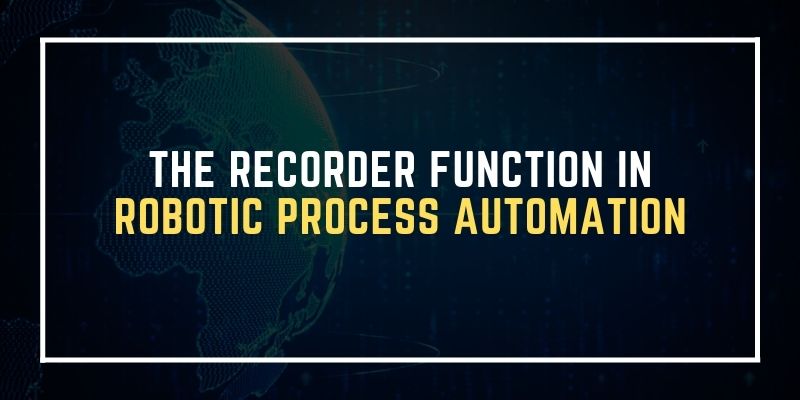What is Process Recorder In RPA?
The RPA Recorder can be used in two different ways. The first approach is to use the recorder function, while the second is to construct new automation. You can record manual procedures based on optimal automation methods by using a process recorder. While the new automation will shorten your time to market, organizations that want to build a more sustainable service from the outset will need to put in extra effort to assure registration.
Another choice is Layout automation which involves studying a team process, creating automation, and then implementing and delivering it. This method takes longer, but it often yields superior results for complex, enterprise-level RPA rankings. Let’s discuss the RPA process recorder function. To get extensive knowledge in Process Recorder In RPA, fetch with RPA Training in Chennai for getting a broad knowledge in process recorder, types of recorder, RPA implementation, and their components, etc.
Recorder function in RPA:
It’s not a new concept to record a succession of activities on your system screen. If you’ve ever used Word or Excel, you’re familiar with the RPA Recorder function. You’ve built up a set of macros to give some basic automation for your system work, and you’ve probably observed how macros’ power grows as performance tools improve.
The workflow recorder functionality in RPA is similar in concept: it is a technique to record the steps in a process and automate them more quickly. This can be a fantastic tool for primary automation. It does, however, have downsides, and software vendors may take some time to address some of them.
In RPA, a process recorder tracks the activities of a user and converts them into an auto-ready workflow that reflects those actions. The recorder will capture that point at precise coordinates if the user clicks on a specific spot. Because the recorder lacks the ability to examine the process, the business analyst should review the workflows on a frequent basis to ensure that they are as efficient and accurate as feasible.
Note: Expertise in RPA technology helps to develop an RPA implementation in an organization, Therefore joining RPA Training Online is an essential option for acquiring knowledge in process recorder in RPA and types of recorder and other RPA technology concepts.
In RPA, a process recorder tracks the activities of a user and converts them into an auto-ready workflow that reflects those actions. The recorder will capture that point at precise coordinates if the user clicks on a specific spot. Because the recorder lacks the ability to examine the process, the business analyst should review the workflows on a frequent basis to ensure that they are as efficient and accurate as feasible.
Furthermore, The RPA process recorder cannot able to determine whether the user has been suspended for a specific reason. The recorder is not recommended for participatory automation improvements since it is a simple tool that cannot analyze and evaluate process results.
It also doesn’t comprehend the financial motivations for automation choosing one course over another. Furthermore, process logging does not lend itself to best practices for reusing modules and sub-processes and cannot be structured as a tiered design process. For the time being, design-based automation plays an even bigger role.
Conclusion:
So far, we discussed the use of process recorder in RPA and its plus and minuses. We hope that this content is beneficial for RPA developers, for get further information, Fetch with FITA Academy for the top-notch RPA Training in Coimbatore with approved certification.


